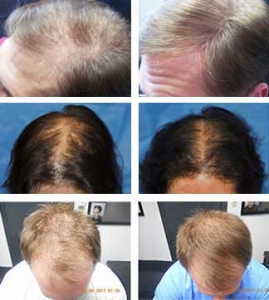Hair Loss & Weight Gain
Summer will be upon us before you know it. That’s why there are plenty of men and women working out to shed those extra pounds they have put on during the cold winter months. Weight loss can be a healthy thing for you body and it can do a lot to improve your overall health. It can give you more energy and give you confidence by helping you look and feel good. While that all sounds good, it can also be a cause for hair loss. The reasons for this we have listed below.
Sudden Weight Loss and Your System
If the weight loss you have been working hard to achieve is dramatic, it can be a shock to your overall system. This can put a great deal of stress on your body and that causes a reaction known as survival mode. Your system will try and conserve energy and it can cut off hair growth as part of this process. The stress that is created can throw off your hormones and hair growth cycles. This can affect the periods of natural hair growth. The stress will eventually subside and when this happens the hair should begin to regrow normal again.
Lack of Nutrients
When it comes to losing weight the one thing many do it cut back on eating. This can result in a lack of nutrition. Dieting could have you cutting down on protein, iron and other nutrient rich foods that are vital for hair growth. When your body lacks nutrients then your system will cut off hair growth as a way to conserve energy for more essential tasks.
Temporary Hair Loss
The good news about hair loss that happens through weight loss is fortunately almost always temporary. Once your body settles back to normal, your hair follicles should go back to their normal hair growth cycle. If you put effort into eating foods that gives your body the nutrients it needs, then any hair loss that is a result of weight loss should subside as well.
Hair Loss Prevention
There are cases where hair loss after weight loss is inevitable; you can prevent it by taking pro-active steps. If you are dieting you should take a multi-vitamin to supplement the nutrients you may not be getting in the food you do eat. It’s important to consume enough protein and iron that your body uses to help hair growth. You need to avoid crash diets that cause dramatic weight loss because the stress that is caused to your body can lead to hair loss. If you take proper care of your body during weight loss then you will have a far less chance of having hair loss.
Talk to a Hair Loss Specialist
If you are concerned about hair loss or what appears to be excessive hair thinning, talk to a hair loss specialist and find out what your options are. At Hairbuilders of Vermont, we offer a free, private consultation with a trained professional hair loss specialist who will listen to your concerns and answer your questions completely and fully. We encourage you not to wait. Schedule your free hair loss evaluation and consultation today.



 If you have
If you have 
 Some of today’s trendy hairstyles were conceived from world history. Women and men have valued their hair since the beginning of time. Let’s walk through a timeline of hairstyles that were unique to several different cultures and eras.
Some of today’s trendy hairstyles were conceived from world history. Women and men have valued their hair since the beginning of time. Let’s walk through a timeline of hairstyles that were unique to several different cultures and eras.
